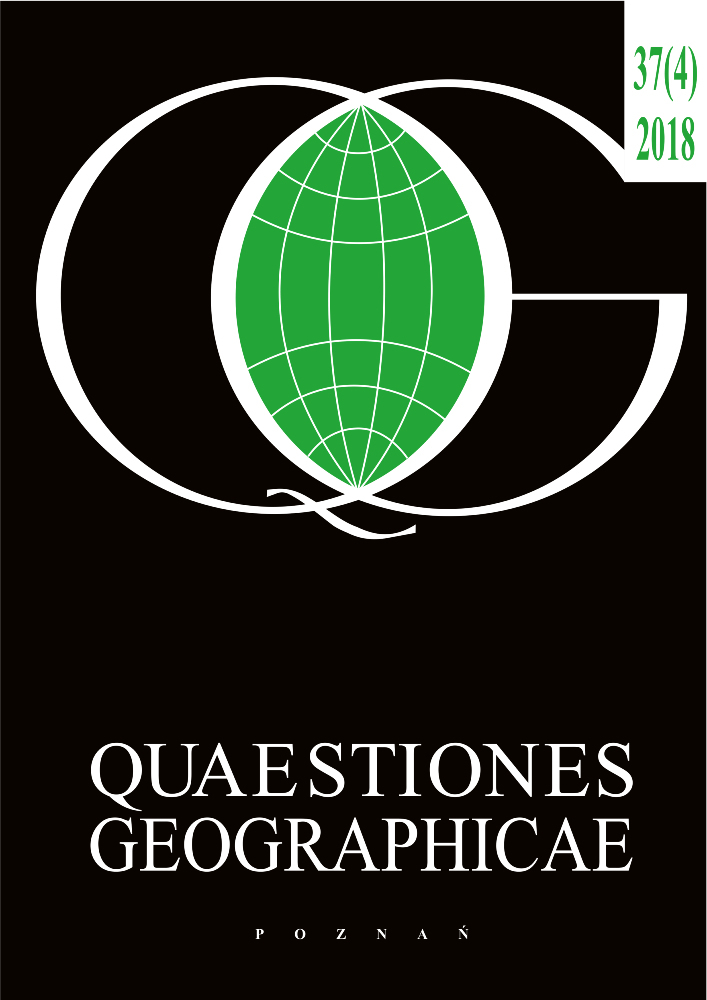Abstract
This paper focuses on the increasing regional disparities in Ireland, especially since the great recession and assesses the degree to which the recovery has been concentrated in urban areas. Ireland was initially affected by the recession to a greater extent than other countries but has recovered strongly. However, this recovery has not been evenly distributed, with some regions showing greater economic resilience. Using descriptive statistics of GDP per capita (PPP), GVA and employment, this paper examines the extent to which the recovery has been a two-tier recovery. The paper finds evidence to suggest that the recovery has been heavily concentrated in Dublin, and to a lesser extent in Cork and Galway, resulting in an urban-rural divide.
Funding
This research has received funding from the European Union’s Horizon 2020 research and innovation programme under the Marie SkłodowskaCurie grant agreement number 721999.
I would also like to thank the two anonymous reviewers as well as prof. Tadeusz Stryjakiewicz, prof. Artur Bajerski and prof. Maria de Fatima Ferreiro for their helpful comments on an earlier version of this paper.
References
Barro R., 1997. Determinants of economic growth. A cross-country empirical study. MIT Press, Cambridge, Massachusetts, USA.
Berkes F., Folke C., 1998. Linking social and ecological systems: Management practices and social mechanisms for building resilience. Cambridge University Press, Cambridge.
Brady A., 2014. Rise of the Celtic Phoenix. Shelflife. https:// www.shelflife.ie/rise-of-the-celtic-phoenix/ (accessed: 16 September 2014).
Breathnach P., van Egeraat C., Curran D., 2015. Regional economic resilience in Ireland: The roles of industrial structure and foreign inward investment. Regional Studies, Regional Science 2(1): 497–517. http://dx.doi.org/10.1080/2 1681376.2015.1088792
Churski P., 2014. Variations in the spatial distribution of areas of economic growth and stagnation in Poland: Determinants and consequences. Quaestiones Geographicae 33(2): 63–77.
Davoudi S., 2012. Resilience: A bridging concept or a dead end? Planning Theory and Practice 13(1): 299–307.
Dokic I., Frohlich Z., Bakaric I.R., 2016. The impact of the economic crisis on regional disparities in Croatia. Cambridge Journal of Regions, Economy and Society 9(1): 179–195. https://doi.org/10.1093/cjres/rsv030
Dyba W., Loewen B., Looga J., Zdražil P., 2018. Regional development in Central-Eastern European countries at the beginning of the 21st century: Path dependence and effects of EU Cohesion Policy. Quaestiones Geographicae 37(2): 77–92.
Easterlin R., 1958. Long term regional income changes: Some suggested factors. Papers and Proceedings of the Regional Science Association, Volume IV: 313–325.
Eurostat, 2018. Database. Online: ec.europa.eu/eurostat/ data/database (accessed: 25 February 2018).
ESPON, 2014. ECR2 – Economic crisis: Resilience of regions. Scientific Report. Luxembourg: ESPON.
Fitzgerald J., 2014. Ireland’s recovery from crisis. CESifo Forum 2 (June).
Hassink R., 2010. Regional resilience: A promising concept to explain differences in regional economic adaptability? Cambridge Journal of Regions, Economy and Society 3: 45–58.
Holling C.S., 1973. Resilience and stability of ecological systems. Annual Review of Ecological Systems 4: 1–23.
Holling C.S., 1996. Engineering resilience versus ecological resilience, In: Schulze P.C. (ed.), Engineering within ecological constraints. National Academy Press, Washington, DC: 31–44.
Kelly E., Barrett A., 2017. Atypical work and Ireland’s labour market collapse and recovery. The Economic and Social Review 48(4): 463–488.
Krugman P., 1991. Increasing returns and economic geography. Journal of Political Economy 99(3): 483–499.
Lupah L., 2018. Socio-economic characteristics of resilient localities – experiences from Slovenia. Regional Studies, Regional Science 5(1): 149–156. https://doi.org/10.1080/2 1681376.2018.1459202
Martin R., 2012. Regional economic resilience, hysteresis and recessionary shocks. Journal of Economic Geography 12(1): 1–32. https://doi.org/10.1093/jeg/lbr019
Martin R., Sunley P., 2015. On the notion of regional economic resilience: Conceptualization and explanation. Journal of Economic Geography 15(1): 1–42. https://doi. org/10.1093/jeg/lbu015
Morgenroth E., 2014. Two-speed recovery? Spatial development in Ireland. ESRI Research Notes 4/2.
O’Hora A., Kelpie C., 2014. German finance minister Wolfgang Schaeuble: Germany jealous of Irish growth figures. The Independent. https://www.independent.ie/business/irish/german-finance-minister-wolfgang-schaeuble-germany-jealous-of-irish-growth-figures-30707713. html (accessed: 31 October 2014).
Reilly J., 2014. Ireland is spending nation once again as Celtic Phoenix rises. The Independent. https://www.independent.ie/irish-news/news/ireland-is-a-spending-nationonce-again-as-celtic-phoenix-rises-30531688.html (accessed: 24 August 2014).
Ruane F., 2016. Ireland – a remarkable economic recovery? The Australian Economic Review 49(3): 241–250.
Simmie J., Martin R., 2010. The economic resilience of regions: Towards an evolutionary approach. Cambridge Journal of Regions, Economy and Society 3(1): 27–43. https://doi. org/10.1093/cjres/rsp029
Solow R., 1956. A contribution to the theory of economic growth. The Quarterly Journal of Economics 70(1): 65–94.
Weston C., 2015. Urban-rural divide widens as capital booms. The Independent. https://www.independent.ie/ business/personal-finance/property-mortgages/urbanrural-divide-widens-as-capital-booms-31167364.html (accessed: 24 April 2015).

